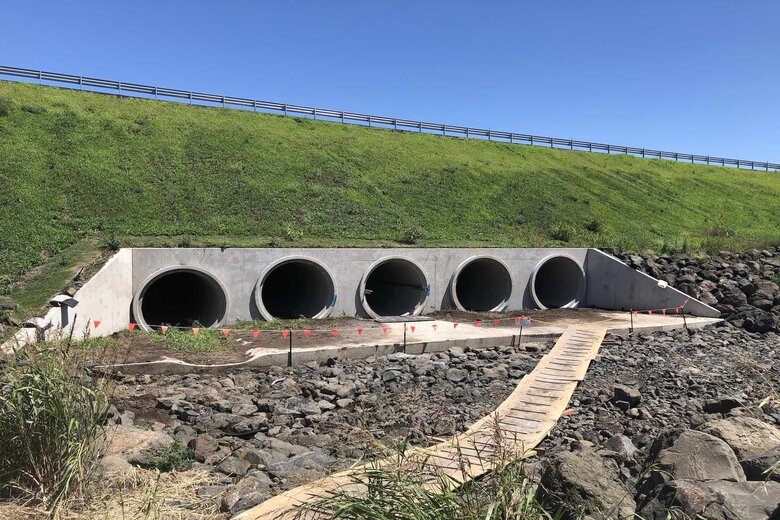
Culverts are the hidden heroes of the infrastructure sector. While they rarely receive the same reverence as bridges, tunnels and road networks, they are vital in ensuring the safe operation of our roads, rail, buildings and structures, writes Steve Piscetek.

Unfortunately, their lack of prominence means that maintenance and repairs are often lacking in priority.
Culverts are important for managing stormwater runoff, allowing water to flow freely under road and rail corridors. In many cases culverts also provide fauna with safe access.
Because of these functions, the construction and maintenance of culverts must adhere to strict standards that protect waterways, the community and other infrastructure like roads, pathways, and rail lines. They must also be designed with a hydraulic capacity capable of handling runoff water with AEPs (annual exceedance probability) up to two per cent, or ARIs (average recurrence intervals) up to 50 or 100 years.
Culverts are commonly built to a ‘1 in 100 year’ rule, which defines significant flood events that have a one per cent chance of occurring in any given year. Unfortunately, it has become clear that heavy floods can occur more frequently than we originally estimated.
As a result, these flood events may increase the strain on a culvert’s passable hydraulic capacity, resulting in many culverts being reclassified as undersized and increasing the risk of damage to roads, rail, and other critical infrastructure.
Building and maintaining effective culverts
Over time, culverts become susceptible to deterioration that can diminish performance and structural integrity, including clogging with debris, scouring at outlets, and abrasion and corrosion.
The main challenge with maintaining culverts is that they are invariably located underground, often under critical infrastructure. As a result, replacing the culverts can be very expensive and disruptive. Therefore, asset owners have sought innovative ways of monitoring the condition of and repairing or refurbishing their culvert assets.
Priorities must shift for culvert maintenance so that activity is proactive, not reactive. Instead of acting after culverts are damaged or begin to show signs of degradation, it is important to maintain a regular inspection schedule to ensure all blockages are removed.
Monitoring to consistent standards is also important and includes checking for corrosion, settlement, joint or compression failures, water ingress and fire damage. Any potential hazards affecting a culvert’s structural integrity should be dealt with immediately.
The conventional approach to remediating and maintaining culverts is to patch or line the culverts with cementitious materials, which may include shotcrete or gunite solution which can remediate damaged or deteriorated areas.
Unfortunately, this approach can compromise culvert effectiveness over time by reducing flowability. For example, if a two-metre diameter damaged culvert is remediated using a 100mm repair layer of cementitious material, its diameter is reduced to 1.8m. This significantly reduces the overall hydraulic capacity of the culvert making it less effective.
Alternatively, ‘re-sleeving’ – which involves inserting a smaller diameter pipe into a culvert and grouting the space between them – is another widely accepted option. However, while these methods are effective, they also decrease culvert diameter and overall capacity.
New Innovations
Fortunately, there are solutions available that are not only more cost-effective and time-efficient than conventional methods, but they also do not reduce culvert hydraulic capacity. Vinyl ester structural coatings, for example, can be used to reline and strengthen culverts without the added thickness of conventional cementitious material.
The thin 12-15mm coating minimises the loss of hydraulic capacity. There are also specialised engineered resins and lightweight cementitious-based flowable fillers available that suitably reinforce culverts without adding unnecessary weight or thickness to the area, allowing the culverts to operate the way it was originally intended.
While culverts may not always be highly visible, they contribute significantly to our everyday lives and our communities rely on their ability to perform correctly. It’s therefore important that they are taken care of, and the right remediation solution is adopted.
*Steve Piscetek is the divisional manager for Mainmark Civil and Mining. He has extensive experience working in construction, road and water infrastructure, the mining and resources sectors and offshore construction.
Comment below to have your say on this story.
If you have a news story or tip-off, get in touch at editorial@governmentnews.com.au.
Sign up to the Government News newsletter